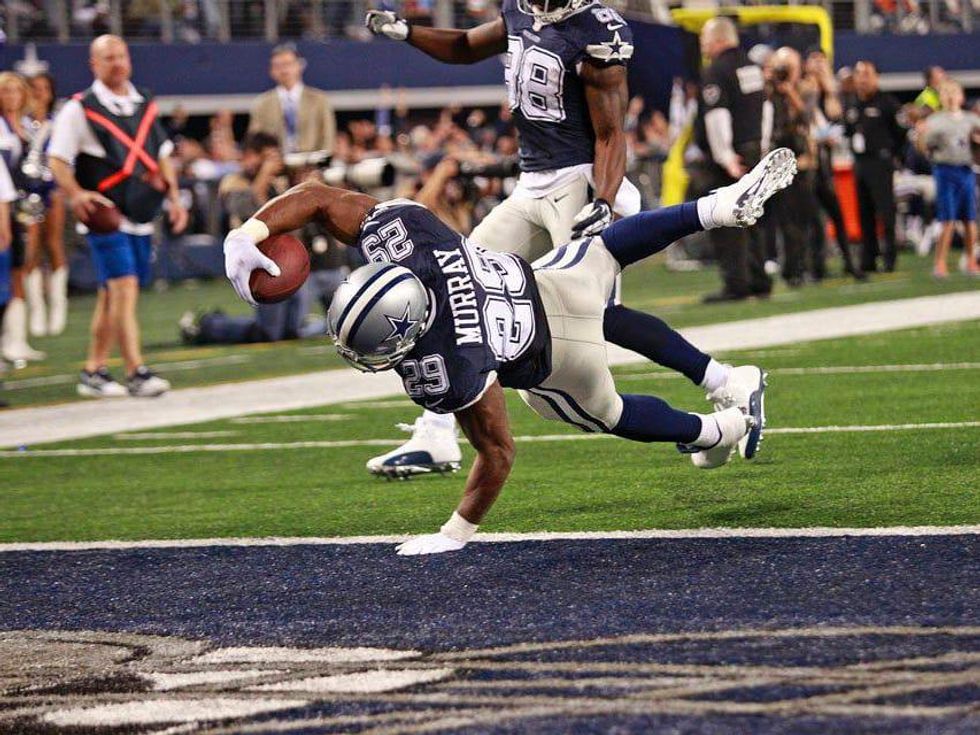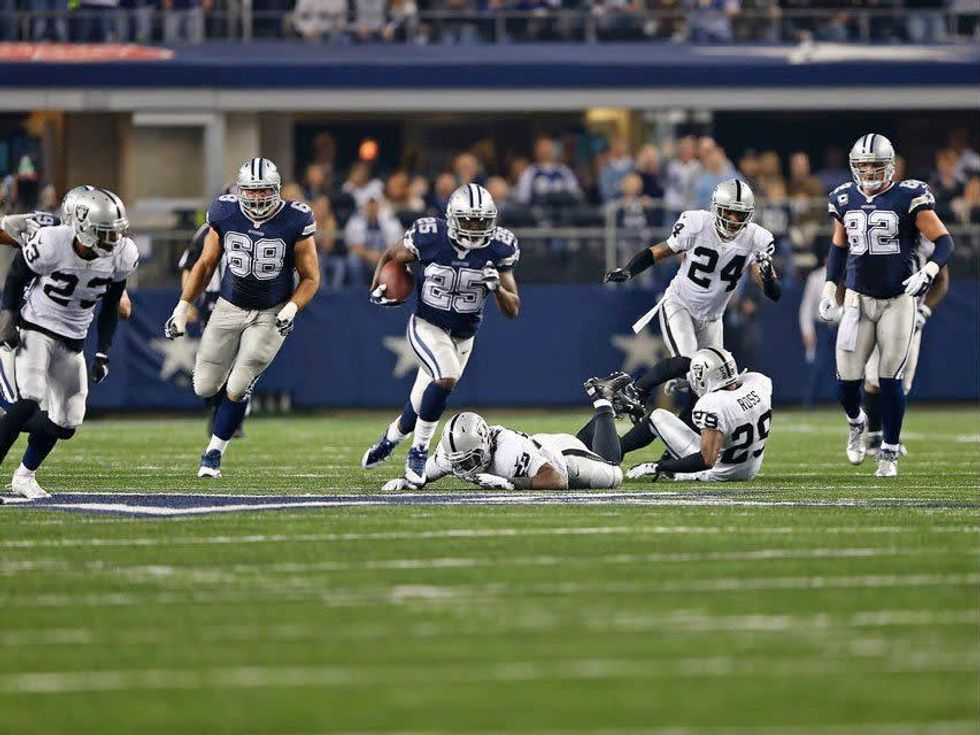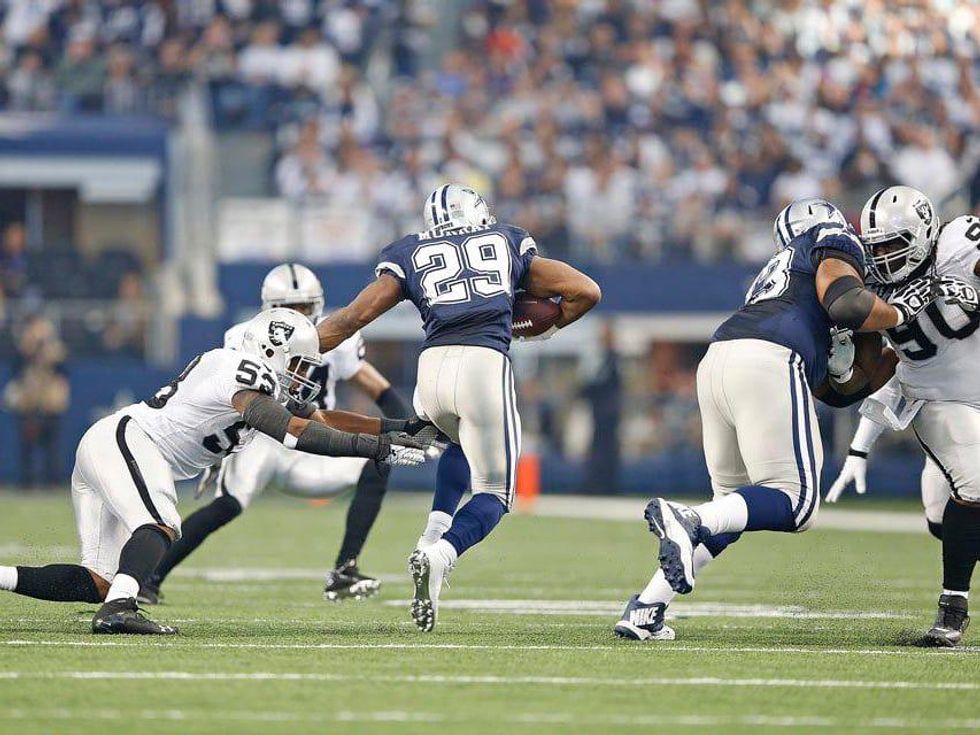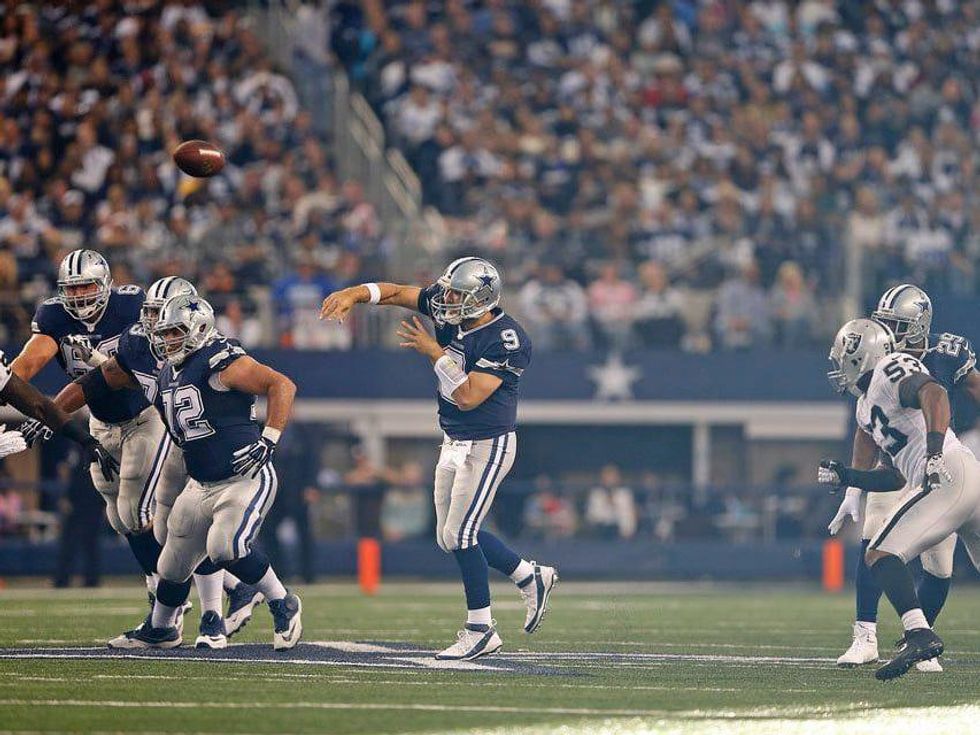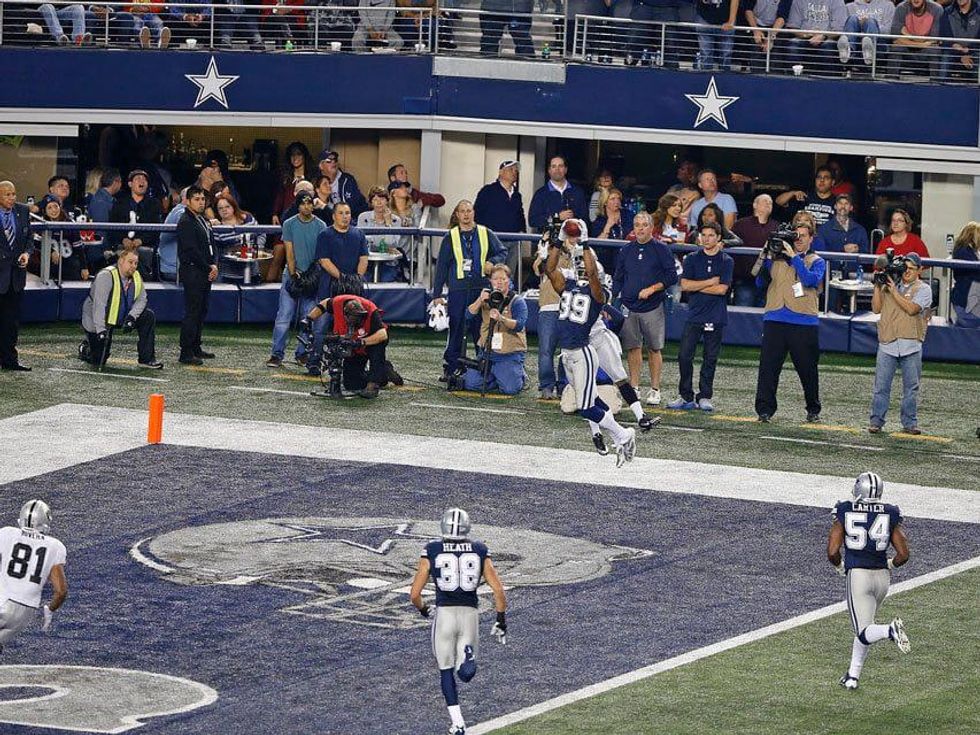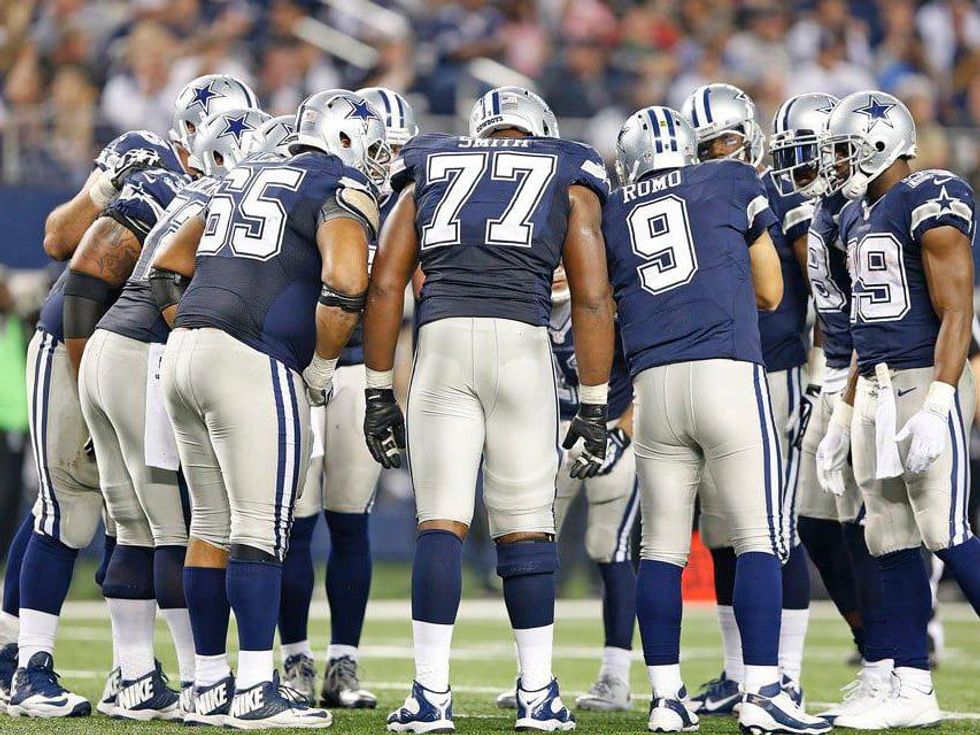Grinding Out A Win
Dallas Cowboys' reliance on run game produces rare back-to-back wins
Are the Dallas Cowboys on the verge of stumbling into a productive running game? It’s possible, if what happened on Thanksgiving Day is a trend and not an aberration. The Cowboys rushed for 144 yards in their 31-24 win against the Oakland Raiders. It was the second-most productive rushing performance of the season, behind only their 193-yard game against St. Louis in week three.
More significantly, the performance represents back-to-back 100-yard rushing games for the Cowboys after they gained 107 rushing yards against the New York Giants last Sunday. Why is it significant? The last time the Cowboys have back-to-back 100-yard rushing games was nearly two years ago.
For once, it wasn’t all DeMarco Murray, who entered the game as one of just two NFL backs with at least 100 carries and better than a 5.0-yard per rush average. Murray rushed for 63 yards and a career-high three rushing touchdowns.
The Cowboys have had back-to-back 100-yard rushing games — and wins.
No, this time, second-year back Lance Dunbar got in on the act. And it might be the best thing that could have happened to the Cowboys.
Dunbar gained 82 yards on 12 carries, with 78 coming in a dazzling third quarter in which Dunbar proved what he could be when paired with Murray. Dunbar had the game’s biggest run, a 45-yarder that set up wide receiver Dez Bryant’s game-tying touchdown reception. That run showed off everything Dunbar can offer: top-end speed, quickness to the hole and elusiveness that Murray does not have.
On that run, the Raiders defense seemed to be in slow motion. They weren’t expecting Dunbar’s acceleration out of the hole.
In the past you could accuse the Cowboys of abandoning the running game in a game in which they fell behind by 14 points. But they didn’t on Thursday. The Cowboys told reporters after the bye-week that they were going to be more patient with the run game. And on Thursday that’s what they were — patient.
The Cowboys kept going back to the run game. It was Murray’s second touchdown run that cut the lead to 21-14 just before halftime, a score that seemed to give the Cowboys momentum at the break.
The scoring drive that Dunbar’s 45-yard run set up came with five runs and five passes. The following scoring drive, which ended with Murray’s seven-yard score in the fourth quarter, featured more runs (five) than passes (three).
Dunbar left the game with a knee injury. The Cowboys are hoping it’s not severe, because this combination has the potential to be dynamic in December.
The defense helped as well. After allowing the Raiders to convert their first seven third downs of the game, the Cowboys defense got the Raiders off the field on their final six third downs.
That created shorter drives for the Raider offense and put the Raider defense on the field longer. The result, with the success of the Cowboys’ run game, was a worn out Raiders defense.
The Cowboys’ final scoring drive, which resulted in a Dan Bailey field goal and a 10-point lead, used 6:39 of clock and featured 10 running plays out of 14 total plays. By the end of this game the Cowboys’ run blocking was dominant. And it couldn’t come at a better time.
The Cowboys have won three of their last four games, but all three wins were against teams under .500. The Cowboys have two road games remaining in Chicago and Washington, and both of those games could feature bad weather. At the least it will be frigid.
If the Cowboys can run the ball in those games the way they ran the ball against Oakland they have a chance to win both. This is the time of year when a dominant run game comes in really handy as the temperature drops and the playoffs loom.
